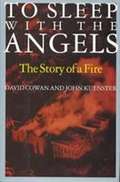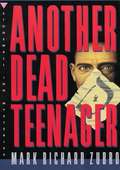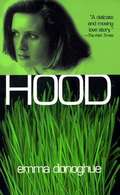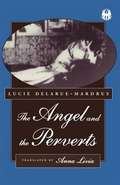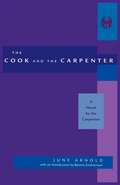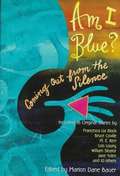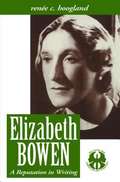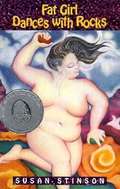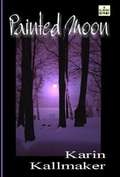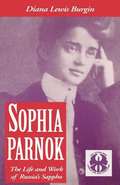- Table View
- List View
The Intimacy Dance: A Guide to Long-Term Success in Gay and Lesbian Relationships
by Betty BerzonGuide to same-sex relationships.
The Sign of the Twisted Candles (Nancy Drew Mystery Stories #9)
by Carolyn KeeneWhile solving the mystery of an old man's disappearing fortune, Nancy ends a family feud and reveals the identity of an orphan of unknown parentage. In the late 1950s, the first 34 Nancy Drew books were revised and condensed. This is the original version from the 1930s.
To Sleep with the Angels: The Story of a Fire
by David Cowan John KuensterOn a grey winter day in December 1958, one of the deadliest fires in American history took the lives of ninety-two children and three nuns at a Catholic elementary school on Chicago’s West Side. The blaze at Our Lady of the Angels School shocked the nation, tore apart a community, left a mystery unsolved to this day, sowed popular suspicion of the church and city fathers, and prompted nationwide fire safety reform in American schools. In To Sleep with the Angels, two veteran journalists tell the moving story of the fire and its consequences. It is a tale of ordinary people caught up in a mind-numbing disaster.
Women on Women 3: A New Anthology of American Lesbian Fiction
by Joan Nestle Naomi HolochThird in this series of anthologies.
A Ghost in the Closet: A Hardly Boys Mystery
by Mabel ManeyThird in the Nancy Clue and the Hardly Boys series; parody.
Aimee & Jaguar: A Love Story, Berlin 1943
by Edna Mccown Erica FischerA real-life love story between two women, one of them a Jew living illegally on the streets during WWII.
And Say Hi To Joyce: America's First Gay Column Comes Out
by Joyce Murdoch Deb PriceHistory and excerpts from the newspaper column.
Another Dead Teenager (Paul Turner Mystery #3)
by Mark Richard ZubroWhen two suburban high-school students are found murdered--both boys who were well respected and liked, with solid family lives and no apparent enemies--Detective Paul Turner is assigned the case. However, as a gay father with two teenage sons and a new lover in his life, Paul Turner has trouble bringing his full attention to bear on the case. But as details slowly emerge, he begins to suspect that he is investigating something more deadly and horrifying than a pair of senseless killings, something that could threaten the lives of the people he holds most dear.
Charlotte Bronte: A Passionate Life
by Lyndall GordonCharlotte Bronte: A Passionate Life looks beyond the insistent image of the modest Victorian lady, the slave to duty in the shadow of tombstones. Instead we see a strong, fiery woman who shaped her own life and transformed it into art. This biography looks at the shared gifts and class ambitions of the Bronte family - at the active feminist, Mary Taylor; at the demanding mentor, Constantin Heger; and at the rising publisher, George Smith - as Charlotte strove to possess them in life and fiction. Her highly autobiographical novels refused current bars to women's writing to release a public voice which could speak intimately to her readers.
Common Cents: A Retiring Six-Term Congressman Reveals How Congress Really Works-And What We Must Do to Fix It
by Major Garrett Timothy J. PennyHood
by Emma DonoghueIn the late '70's Irish convent school teenager Pen O'Grady fell in love with fellow student Cara Wall. Pen, an appealing heroine who is feisty yet vulnerable, and Cara, a free spirit who follows no path but her own, prove themselves to be up to the challenge of a love deemed unacceptable in Catholic Ireland. Their tumultuous relationship, full of love and passion and desire and flight, survives infidelities of all sorts--until they reach their late 20s, when Cara dies in a car accident. Through the elegant use of flashbacks intermingled with the harsh present-day reality of Cara's upcoming funeral, Pen reveals a sexy, beautifully written love story filled with the bittersweet reflections and emotional complexity of an intimate relationship. Above all, it is a graceful tale about coming to terms with loss.
Open House (Helen Black Mysteries #4)
by Pat WelchTo most people, a call in the middle of the night means family trouble. But Helen Black's family disowned her years ago. But the call is indeed from Helen's family. Great Aunt Ruth has passed on, and, inexplicably, left Helen her house. And so Helen journeys from Berkeley, from partner Frieda, to return to her roots in Mississippi. To look once more into the face of the father who repudiated her. Into the face of the woman who was her childhood sweetheart and is now a cop. But Helen finds far more than she could ever imagine. A dying grandfather, and small town secrets, one of them contained in the very house that is now hers. She finds murder, and submerged intrigue that harkens all the way back to a deeply stained period of history in the American south.
Sweat: Stories and a Novella
by Lucy Jane BledsoeThe stories are about lesbians and some of them are about sports.
The Angel and the Perverts
by Lucie Delarue-Mardrus Anna LiviaFirst published in 1930. Set in the lesbian and gay circles of Paris in the 1920s, The Angel and the Perverts tells the story of a hermaphrodite born to upper class parents in Normandy and ignorant of his/her physical difference. As an adult, s/he lives a double life as Marion/Mario, passing undetected as a lesbian in the literary salons of the times, and as a gay man in the cocaine dens made famous by Colette.
The Cook and the Carpenter
by June Arnold Bonnie ZimmermanWomen's liberation sought to transform every sector of U.S. society--its educational system, culture, language, politics, and, importantly, the delivery of social services. To enable this movement, women all over the country began to establish women's centers. In New York City, women from almost every local women's liberation group took over an abandoned building in lower Manhattan on New Year's Eve, 1970. They named the building The Fifth Street Women's Building and renovated it to feed, clothe, shelter, and educate women in need. The take-over was a huge success, attracting hundreds of activists and community members. Thirteen days later, the New York City Tactical Police stormed the building, expelled the women, and ended the action. The City then tore the building down and built a parking lot on the site. June Arnold was one of the original planners and an active participant in this episode. When she got out of jail, she went home and wrote this novel about what happened. The Cook and the Carpenter, which quickly gained fame for its use of a non-gendered language, remains one of the best representations of the time period that berthed modern feminism and paved the way for lesbian communities.
Am I Blue? Coming Out from the Silence
by Marion Dane BauerShort stories dealing with gay and lesbian teens etc.
Elizabeth Bowen: A Reputation in Writing
by Renee C. HooglandImmensely popular during her lifetime, the Anglo-Irish writer Elizabeth Bowen (1899-1973) has since been treated as a peripheral figure on the literary map. If only in view of her prolific output--ten novels, nearly eighty short stories, and a substantial body of non- fiction--Bowen is a noteworthy novelist. The radical quality of her work, however, renders her an exceptional one. Surfacing in both subject matter and style, her fictions harbor a subversive potential which has hitherto gone unnoticed. Using a wide range of critical theories-from semiotics to psychoanalysis, from narratology to deconstruction-this book presents a radical re-reading of a selection of Bowen's novels from a lesbian feminist perspective. Taking into account both cultural contexts and the author's non-fictional writings, the book's main focus is on configurations of gender and sexuality. Bowen's fiction constitutes an exploration of the unstable and destabilizing effects of sexuality in the interdependent processes of subjectivity and what she herself referred to as so-called reality.
Fat Girl Dances With Rocks
by Susan StinsonIt's the summer of drinking and driving, disco and diets, fake IDs and geology, and fat 17-year-old Char is wondering if she is animal, vegetable, or mineral. What does it mean when your best friend French-braids your hair, kisses you on the lips, and leaves town? Char gets a summer job in a nursing home, and meets people with bodies and abilities as various as the textures of the rocks her friend Felice collects. Fat Girl Dances with Rocks is a novel about the many shapes of beauty: the fold of a belly, the green swelling of seedlings, the sharp edges of granite, obsidian, and flint. Fat Girl Dances with Rocks is a coming of age story. It is a coming out story, and for Char, it is a story of coming into her own body - all the way to the edges of her skin.
Painted Moon
by Karin Kallmaker"...a delicious romance with just a hint of intrigue...an uncommonly realistic romance, one that surmounts class, race, and closets". -- Small Press Magazine
Sophia Parnok: The Life and Work of Russia's Sappho
by Diana L. Burgin"The weather in Moscow is good, there's no cholera, there's also no lesbian love... Brrr! Remembering those persons of whom you write me makes me nauseous as if I'd eaten a rotten sardine. Moscow doesn't have them--and that's marvellous." Anton Chekhov, writing to his publisher in 1895. Chekhov's barbed comment suggests the climate in which Sophia Parnok was writing, and is an added testament to to the strength and confidence with which she pursued both her personal and artistic life. Author of five volumes of poetry, and lover of Marina Tsvetaeva, Sophia Parnok was the only openly lesbian voice in Russian poetry during the Silver Age of Russian letters. Despite her unique contribution to modern Russian lyricism however, Parnok's life and work have essentially been forgotten. Parnok was not a political activist, and she had no engagement with the feminism vogueish in young Russian intellectual circles. From a young age, however, she deplored all forms of male posturing and condescension and felt alienated from what she called patriarchal virtues. Parnok's approach to her sexuality was equally forthright. Accepting lesbianism as her natural disposition, Parnok acknowledged her relationships with women, both sexual and non-sexual, to be the centre of her creative existence. Diana Burgin's extensively researched life of Parnok is deliberately woven around the poet's own account, visible in her writings. The book is divided into seven chapters, which reflect seven natural divisions in Parnok's life. This lends Burgin's work a particular poetic resonance, owing to its structural affinity with one of Parnok's last and greatest poetic achievements, the cycle of love lyrics Ursa Major. Dedicated to her last lover, Parnok refers to this cycle as a seven-star of verses, after the seven stars that make up the constellation. Parnok's poems, translated here for the first time in English, added to a wealth of biographical material, make this book a fascinating and lyrical account of an important Russian poet. Burgin's work is essential reading for students of Russian literature, lesbian history and women's studies.


